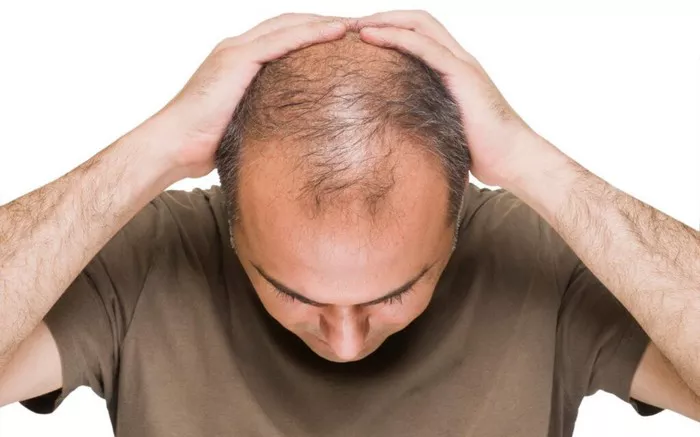Hair loss is a common concern for many men, impacting self-esteem and confidence. Understanding when hair loss typically begins can help individuals take proactive steps to manage their hair health and seek appropriate treatments. In this article, we will explore the factors that contribute to hair loss in men, when it typically starts, and strategies for managing hair loss effectively.
Understanding Male Pattern Baldness
Male pattern baldness, also known as androgenetic alopecia, is the most common cause of hair loss in men. It is characterized by a gradual thinning of hair, typically starting at the temples and crown of the head. Male pattern baldness is primarily influenced by genetics and hormonal factors, particularly the hormone dihydrotestosterone (DHT), which can shrink hair follicles and shorten the hair growth cycle.
Factors Contributing to Hair Loss in Men
While genetics play a significant role in male pattern baldness, several other factors can contribute to hair loss in men:
Age: Hair loss tends to become more prevalent with age, with the majority of men experiencing some degree of hair thinning by the age of 50.
Hormonal Changes: Fluctuations in hormone levels, particularly increased levels of DHT, can accelerate hair loss in susceptible individuals.
Stress: Chronic stress can disrupt the hair growth cycle and lead to increased shedding of hair.
Poor Nutrition: A diet lacking in essential nutrients such as vitamins, minerals, and protein can contribute to hair loss and thinning.
Medical Conditions: Certain medical conditions such as thyroid disorders, autoimmune diseases, and scalp infections can cause hair loss in men.
Medications: Some medications, including chemotherapy drugs, blood thinners, and antidepressants, can cause hair loss as a side effect.
When Does Hair Loss Typically Start in Men?
The onset of hair loss can vary among men and is influenced by genetic predisposition, lifestyle factors, and overall health. However, male pattern baldness typically begins in the following patterns:
Early 20s to 30s: Hair loss often begins with a receding hairline or thinning at the temples, gradually progressing to the crown of the head.
Late 30s to 40s: By this age, many men may notice more pronounced thinning and balding, with areas of the scalp becoming increasingly visible.
50s and Beyond: Hair loss tends to stabilize by the age of 50, although some individuals may continue to experience gradual thinning over time.
It’s important to note that while male pattern baldness is the most common cause of hair loss in men, other factors such as stress, medical conditions, and medications can also contribute to hair thinning at any age.
Strategies for Managing Hair Loss
While hair loss can be distressing, there are several strategies that men can employ to manage and minimize its impact:
Healthy Lifestyle: Maintaining a balanced diet, regular exercise routine, and managing stress levels can promote overall health and hair growth.
Hair Care Practices: Using gentle shampoos and conditioners, avoiding harsh chemical treatments and excessive heat styling, and practicing good scalp hygiene can help prevent further damage to the hair.
Medications: FDA-approved medications such as minoxidil (Rogaine) and finasteride (Propecia) can help slow down hair loss and promote hair regrowth in some men. It’s essential to consult with a healthcare professional before starting any medication to determine the appropriate treatment plan.
Hair Transplant Surgery: For men with advanced hair loss, hair transplant surgery can be an effective option for restoring lost hair and achieving a fuller head of hair. During the procedure, hair follicles are harvested from donor areas and transplanted into balding or thinning areas of the scalp.
Scalp Micropigmentation (SMP): SMP is a non-invasive cosmetic procedure that involves tattooing the scalp to create the appearance of a fuller head of hair. It can be a suitable option for men who are not candidates for hair transplant surgery or prefer a non-surgical approach.
Conclusion
Hair loss is a common concern for many men, and understanding when it typically starts can help individuals take proactive steps to manage their hair health effectively. Male pattern baldness, the most common cause of hair loss in men, typically begins in the early to mid-20s and progresses gradually over time. While genetics play a significant role in male pattern baldness, other factors such as age, hormonal changes, stress, and medical conditions can also contribute to hair loss.
By adopting healthy lifestyle practices, using appropriate hair care products, and exploring treatment options such as medications, hair transplant surgery, and scalp micropigmentation, men can effectively manage and minimize the impact of hair loss on their lives. It’s essential for men experiencing hair loss to consult with a healthcare professional or hair restoration specialist to determine the most suitable treatment plan based on their individual needs and preferences.
Will Collagen Help With Hair Loss


